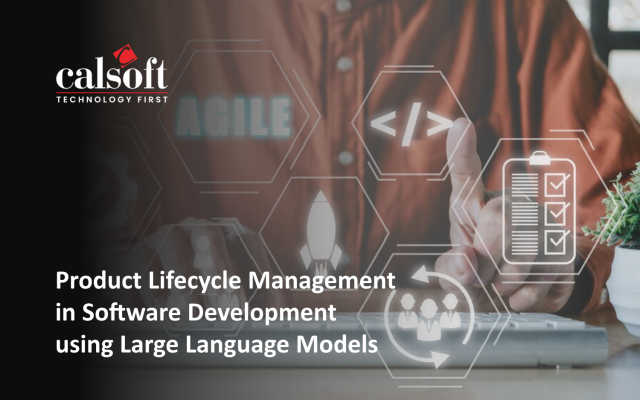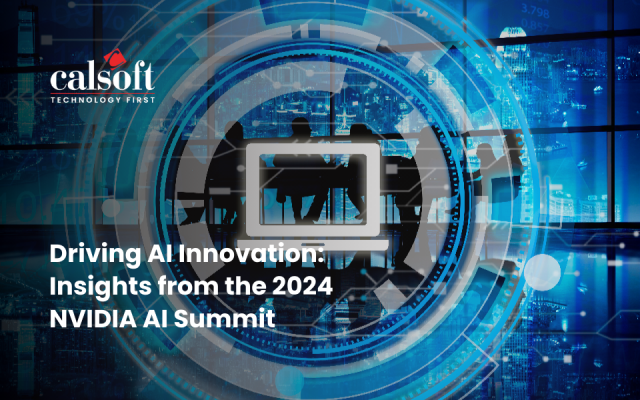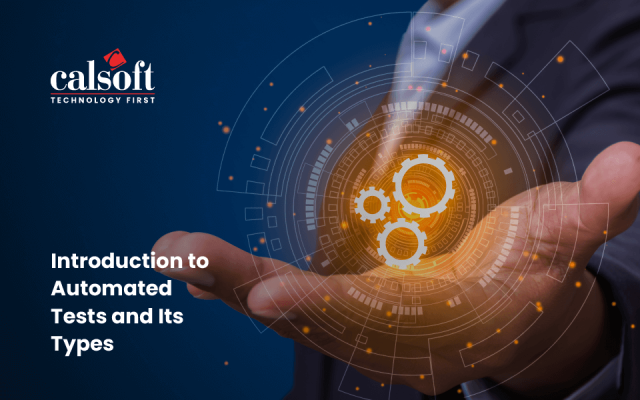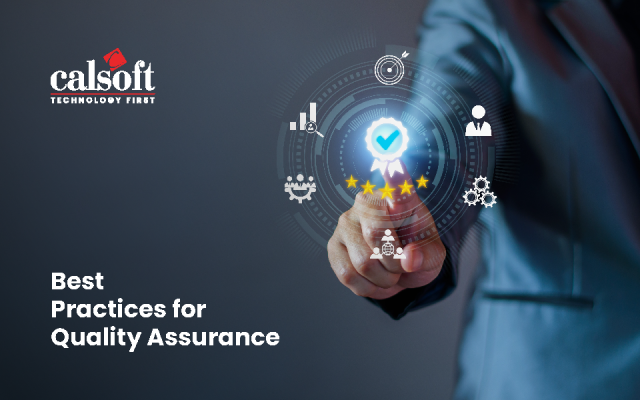In the dynamic realm of software development, staying competitive often entails embracing cutting-edge technologies. One of the key innovations gaining traction in the industry today is Generative Artificial Intelligence (GenAI, Generative AI). The integration of this technology in the Software Development Lifecycle (SDLC) process holds massive potential. In SDLC, as software products and its development become more complicated, the demand for efficient and precise testing methods is at an all-time high.
Traditionally, software testing consumes a lot of time and often produces errors requiring multiple revisions. Manual testing, case creation, analysis, and execution can create bottlenecks and hinder the ability to deliver high-quality products.
However, generative AI in software testing is poised to revolutionize this process by automating and optimizing multiple aspects to accelerate the software development cycle.
According to Grand View Research Report, the global AI-enabled testing market size is expected to grow at a Compound Annual Growth Rate (CAGR) of 18.4% from 2023 to 2030.
Let’s explore how you can implement generative AI in testing to improve efficiency and speed up the process!
What is Generative AI?
Generative AI can be defined as a subset of Artificial Intelligence (AI) that help in generating new and better-quality content, including audio, code, images, text, simulations, and videos. Unlike rule-based systems, Generative AI learns from large amounts of data to generate new information. Generative AI adopts various evolving techniques, utilizes Large Language Models (LLMs), focusing on the AI foundation models.
These models are trained on extensive sets of unlabeled data, empowering them to adapt to various tasks through further fine-tuning. Developing these models needs complex mathematical computations and substantial computing power. At their core, however, they function as prediction algorithms.
A Brief History of QA and Evolution of Testing Practices
The transition from manual testing to AI-driven solutions has essentially transformed how we guarantee software quality and reliability. Generative AI is tackling this need by learning from existing data to generate new, high-quality test cases. It can analyze enormous amounts of data, recognize patterns, and predict possible defects, thereby enhancing test coverage and accuracy. It can produce unique solutions that address the age-old problem of tedious and error-prone manual testing.
Let’s explore the timeline of testing practices, from manual to generative AI testing.

Manual Testing
Historically, testers used manual methods to check features of software for bugs and irregularities. This whole process required developing test cases, running them, and finally recording and reporting the findings.
Although this method offered a high level of control and deep insights, it consumed a lot of time and was susceptible to human error.
Scripted Automation
Scripted automation emerged to enhance efficiency, enabling the development of predictable test scenarios. With the help of these scripts, testers could automate a series of activities, assuring consistency and saving time.
Despite the apparent benefits, developing the scripts became time-consuming and lacked adaptability to changing software.
Data-Driven Testing
With the emergence of data-driven testing, testers could enter various data sets into a pre-designed test script to get several test scenarios from a single script. The method greatly benefitted the applications that needed to be tested against several sets of data.
While efficient, this method still required manual data management and couldn’t automatically adjust for new cases.
Generative AI in Testing
Now comes generative AI in software testing, an AI LLM model that can generate innovative and valuable outputs, such as test cases or test data, without explicit human input. With a capacity for autonomous creation, it helps to increase the testing breadth while developing context-specific tests to reduce human intervention.
As advances in AI and machine learning continue to emerge, gen AI in QA and testing will play a crucial role in developing an efficient testing process as shown in the image below.

One of the significant advantages of generative AI in test automation is its ability to lower testing time and expenses. Traditional testing methods often engage repetitive and time-consuming tasks. Generative AI automates these tasks, freeing up QA teams to focus on more critical phases of the SDLC. This accelerates the testing process assuring a higher quality of software releases.
Additionally, generative AI enhances the maintenance of test scripts. In a dynamic software environment where applications often change, maintaining test scripts can be a challenging task. Generative AI can adapt to these changes, automatically updating test scripts and ensuring their significance and efficiency.
Also read the blog on Gen AI in SDLC
The Benefits and Challenges of Generative AI in QA
As they say, there are two sides to the same coin; generative AI in software testing has its benefits and challenges.

Benefits of Generative AI in QA
- Accelerated testing: Automates repetitive test cases to cut down on manual testing efforts.
- Generates enhanced test scenarios: Creates a diverse range of test cases, including edge cases and complex scenarios.
- Early bug identification: Generative AI can analyze code and data patterns to predict potential issues before they become critical defects.
- Improved fault isolation: Identifies the root causes of defects for faster resolution and prevention of recurring issues.
- Predictive analytics: Ability to assess historical test data to predict areas prone to defects.
- Increased focus on complex testing: By automating routine tasks, QA professionals can concentrate on complex test scenarios requiring human expertise.
Challenges of Generative AI in QA and Testing
While the benefits outweigh the challenges, it is crucial to consider the obstacles before implementing gen AI in testing.
- Data quality: Since generative AI models rely on high-quality, representative data, poor data quality can lead to inaccurate test cases and false positives.
- Data privacy concerns: Handling sensitive data during training and testing requires strong data privacy measures to protect sensitive information.
- Unintended biases: It may inherit biases present in the training data, leading to biased test cases and discriminatory outcomes.
- High computational demands: Training and running complex generative AI models requires significant computational power and infrastructure.
Generative AI software testing has the potential to boost performance, it is important to consider and address these drawbacks. Additionally, it is safe to say that excessive reliance on AI can have repercussions, thus a balance of human judgment with AI capabilities is best for accurate results.
Now, let’s take a closer look at the types of generative AI models to find the ones that perfectly fit your needs.
Types of Generative AI Models in Software Testing
Generative AI includes several models and techniques to generate new data with improved accuracy and resemblance to human-generated content. Below is a list of some prominent models:
Generative Adversarial Networks (GANS)
GANs excel in creating diverse test scenarios that closely resemble realistic conditions. They produce highly authentic test cases by pitting a generator against a discriminator for enhanced test coverage. Because GANs can generate highly realistic content, developers have extensively used them to create art, videos, and image synthesis.
However, training GANs can be a demanding process that requires careful tuning.
Transformers
Transformers, such as the GPT series, use attention mechanisms to understand the context and relationships within textual data and can be adapted to generate test cases based on natural language descriptions of code requirements.
Additionally, they can analyze complex code structures to generate relevant test scenarios. While transformers have shown strong natural language processing abilities, their application in QA is still an emerging area.
Diffusion Models
With diffusion models, you can create diverse and high-quality test data from the ones they’ve been trained on. They use a sequence of reversible operations to convert simple distribution to complex and relevant data distribution.
Although this technique has shown potential in image and text generation, its application to software testing is still under exploration.
Variational Autoencoders (VAEs)
By combining the capabilities of probabilistic modeling and autoencoders, VAEs can compress data into a lower-dimensional latent space. This further allows for the generation of new data points.
Furthermore, in QA, VAEs can be used to create synthetic test data and explore variations of existing test cases. VAEs are known to balance generative capabilities and interpretability compared to other models.
Flow-based Models
Designed to learn the underlying structure of a given dataset, Flow-based models analyze the probability distributions of the various values or events in the dataset. Based on this, it can generate new data points with identical statistical traits and attributes to those in the initial dataset.
One distinguishing aspect of flow-based models is that they use a simple invertible transformation on the input data that can be easily reversed. This makes flow-based models more computationally efficient and faster than other models.
Recurrent Neural Networks (RNNs)
Unlike typical neural networks, RNNs contain an internal memory that allows them to use past inputs to make predictions or classifications. They are ideal for applications like natural language processing, speech recognition, and time series analysis.
While RNNs are powerful, they have limitations such as vanishing gradients and difficulty capturing long-term relationships.
Next, let’s learn how you can integrate gen AI with various technologies to get the results you need!
Gen AI Integration with Other Technologies
Like combining different ingredients to make a perfect dish, integrating generative AI with other technologies can give exceptional results.
Reinforcement Learning (RL)
Reinforcement learning helps to incorporate a learning component into the testing process. It approaches testing as a decision-making problem, and experiments with multiple test paths. Furthermore, it learns from successes and failures to improve test case generation, which is useful for complicated, interactive systems, where typical test case design may fall short.
Computer Vision
By combining generative AI in software testing with computer vision, you can develop clever testing systems with the ability to interpret and interact with visual aspects. It combines image recognition, and object detection, allowing QA teams to successfully test visually rich applications.
Partnerships with Other AI Models
Integrating generative AI with other AI models, such as Natural Language Processing (NLP) and machine learning, helps to create more complex testing results. For example, NLP creates test cases based on natural language requirements, while machine learning helps with test execution and analysis.
Such integrations can help QA teams to become efficient and produce intelligent testing processes that give higher-quality products.
How to Develop a QA Strategy with Generative AI
Generative AI in software testing can transform the entire process; however, to use this technology efficiently, you need to implement a structured approach.
Step1: Define clear objectives – Identify your specific goals that need to be achieved through the Generative AI-based tool, whether it’s improving test coverage or reducing manual effort.
Step 2: Assess testing needs – Consider factors like test complexity, data availability, etc., to evaluate where generative AI can add the most value.
Step 3: Prepare infrastructure and expertise – Ensure sufficient computational resources and the availability of skilled personnel.
Step 4: Select suitable tools – Choose generative AI models and platforms aligned with your goals and resources. There are several tools and models which can integrate Generative AI into their traditional processes. Each tool is unique with diverse strengths and limitations. Assess whether the selected tool is in orientation with the organization’s objectives.
Step 5: Train your team – Train and equip your team with the necessary skills to work with generative AI. Basic training incorporates basics of Generative AI, working with specific tools and understanding its processes, assessing the results, and debugging the issues needed for successful implementation.
Step 6: Implement and monitor – Gradually introduce generative AI, track its performance, and adjust as needed. Once the goals are recognized and clear, infrastructure is set up, and training is completed, employing a continuous monitoring process is essential to assess performance. By focusing on key areas and other segments of the testing process, you can identify and address challenges early, ensuring seamless operations.
In addition to the above key steps, preparing high-quality data is crucial, as accurate and representative data significantly impacts the model’s training process. Continuous evaluation is also important, requiring ongoing monitoring of the model’s performance and retraining as necessary to maintain accuracy and relevance. Additionally, prioritizing ethics is vital by addressing concerns related to bias, privacy, and transparency to ensure responsible and fair use of the technology.
Follow these steps to successfully channel the power of generative AI in software testing to enhance your QA processes.
Use Cases of Generative AI in QA
Generative AI is revolutionizing the QA processes by automating and enhancing various testing activities. Below listed are some key use cases:
Generating Test Cases
With the help of generative AI, you can produce test cases specifically designed for an application for comprehensive coverage. Additionally, AI can explore various testing scenarios to detect potential issues that might be overlooked by traditional methods.
Code Completion and Generation
AI can assist in writing or suggesting completions for test scripts, potentially improving efficiency. For specific test scenarios, AI can generate complete test scripts based on given requirements.
Scenario Exploration
To test the product under various conditions, generative AI can craft realistic user behaviors and interactions for higher accuracy. Exploring such unexpected scenarios can help you uncover potential vulnerabilities and develop solutions.
Anomaly Identification
By correlating test failures with code changes, AI can help pinpoint the root cause of defects. It can also analyze test results to identify patterns and predict potential issues.
Data Generation
AI can generate realistic test data and expand existing datasets to improve model training and testing effectiveness. You can utilize generative AI in testing to improve test coverage, efficiency, and effectiveness.
Final Thoughts
Software testing can become a tedious process with the continuous testing and implementation cycles. Testing helps locate and address defects early in the SDLC; ensures the product is reliable and easy to use; and saves on the costs that would be incurred on fixing the product after delivery. To reduce the costs and time associated with the testing process, it is necessary to automate the process. With shrinking delivery cycles, we are also witnessing a trend of Artificial Intelligence & Machine Learning being introduced in the testing realm to speed up the time to market. Generative AI in software testing can help to automate and optimize multiple operations. Its capacity to generate various test scenarios, evaluate complex data, and learn from previous experiences allows for continuous improvement and higher accuracy.
Calsoft being a technology-first partner, offers end-to-end software product testing solutions using advanced testing techniques and tools, driven by a passion for quality engineering. With over 25 years of experience and over 1,500 professionals across the globe, Calsoft helps customers solve their biggest business challenges.







